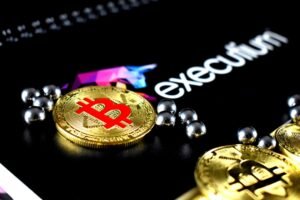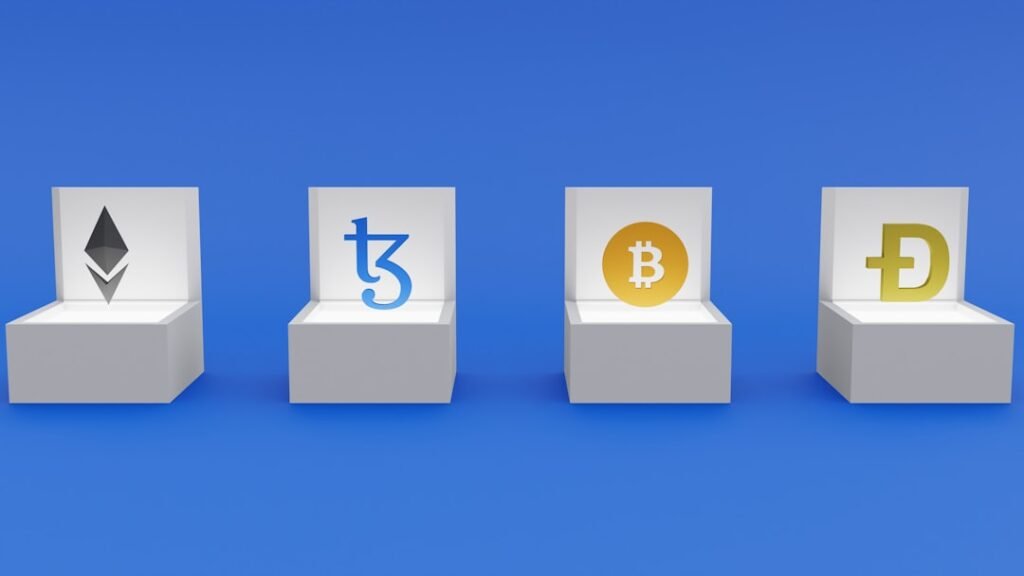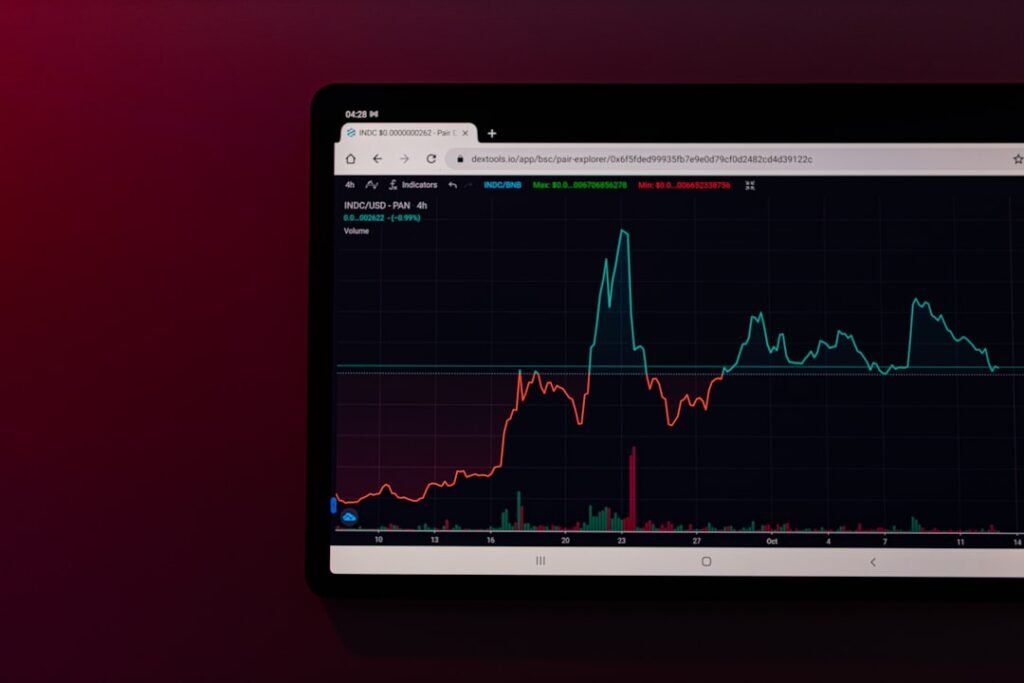Beyond Payments: The Hidden Powers of Utility Tokens You Need to Know
Forget the hype and the headlines about wild price swings. Not every digital token is designed for pure speculation. Many exist for a far more fundamental reason: to make things work. These are utility tokens – the unsung heroes and indispensable engines powering functionality across the Web3 landscape. They unlock features, reward participation, and act as the digital keys granting access to specific services within blockchain-based ecosystems.
Before diving deeper, let's clarify what a utility token actually is and why understanding them matters, whether you're a user, a builder, or simply exploring the vast potential of crypto.
What Exactly is a Utility Token?
At its core, a utility token is a digital asset that grants its holder access to a specific product or service within a defined blockchain ecosystem. Crucially, holding a utility token does لا equate to owning a piece of the company that issued it. Instead, think of it as a specialized key or a prepaid credit:
- Access Key: It unlocks specific functions, features, or content within a platform or application.
- Internal Currency: It facilitates transactions and interactions within its native ecosystem.
Utility tokens are the lifeblood of decentralized applications (dApps), blockchain games, digital marketplaces, and Decentralized Finance (DeFi) projects. Their uses are diverse:
- Paying network transaction fees (gas).
- Accessing premium tiers or exclusive features.
- Rewarding users for participation or contributions.
- Purchasing in-game assets or virtual land.
- Paying for decentralized storage or compute resources.
A classic example is the Basic Attention Token (BAT). Used within the privacy-focused Brave browser, BAT allows users to reward content creators directly and earn tokens for viewing privacy-respecting advertisements. Its value stems directly from its function within the Brave ecosystem.
While utility tokens aren't primarily designed as investments, they often gain market value through trading on exchanges. This tradability, coupled with their functional purpose, creates a unique dynamic. Importantly, many regulatory bodies treat utility tokens differently from securities because they don't inherently represent ownership or profit-sharing rights.
What Sets Utility Tokens Apart?
The defining characteristic of a utility token is its purpose-driven value. Its worth is intrinsically linked to its usefulness within its specific ecosystem, not merely speculation or representing external assets. Consider Filecoin (FIL). Its value derives from its function: you use FIL tokens to pay for decentralized storage space on the Filecoin network. The more demand there is for Filecoin storage, the more demand there is for FIL tokens.
Projects deliberately design utility tokens to incentivize participation and growth. You might earn tokens by contributing resources (like storage or computation), providing valuable data, or actively using the platform. Conversely, you spend tokens to access features or services that would otherwise be unavailable.
This direct link between platform usage, demand for the token, and the token's utility is what fundamentally differentiates them within the broader crypto asset class.
How Do Utility Tokens Actually Work?
Utility tokens are digital assets created and managed using العقود الذكية on existing blockchain networks. These self-executing contracts encode the rules governing the token: how it can be transferred, spent, burned (destroyed), or used within dApps.
Unlike native cryptocurrencies like Bitcoin (BTC) or Ethereum (ETH), utility tokens do not have their own dedicated blockchains. They are built on top of established networks, leveraging their security and infrastructure. Common platforms include:
- Ethereum: Primarily using the ERC-20 token standard, which defines rules for supply, balances, and transfers.
- BNB Chain: Home to tokens like BNB itself.
- Solana: Known for high speed and low fees.
- Polygon: A scaling solution for Ethereum.
- Others: Cardano, Polkadot, etc.
This reliance on existing chains allows for easier integration with wallets and interoperability across platforms supporting the same token standards.
When you interact with a platform using its utility token, you're essentially triggering a smart contract function. This contract might:
- Verify your token balance.
- Deduct the required tokens to access a feature or service.
- Record the transaction immutably on the blockchain.
For instance, if a dApp charges a fee in its native token for a specific action, the smart contract first checks if you hold enough tokens before executing your request. This mechanism ensures tokens act as effective gatekeepers to platform functionality.
It's vital to note that utility tokens generally do not grant inherent rights like voting, staking rewards, or profit-sharing unless specifically programmed into their smart contracts. Their capabilities are entirely defined by the project's code.
The immutability of deployed smart contracts adds transparency but also carries risk. If a flaw exists in the token's logic, it's extremely difficult to change. This underscores the importance of rigorous smart contract audits before a token launch.
Users hold utility tokens in compatible digital wallets (like MetaMask for ERC-20 tokens) and interact with them via dApp interfaces, browser extensions, or mobile apps.
Utility Tokens in Action: Real-World Examples
Hundreds of utility tokens exist, but some stand out due to their widespread adoption and clear value proposition:
-
Binance Coin (BNB): The powerhouse behind the Binance ecosystem. Holders use BNB to:
- Pay trading fees on Binance exchange (often at a discount).
- Participate in token sales on Binance Launchpad.
- Power transactions and smart contracts on BNB Chain.
- Pay for various services within the Binance ecosystem (travel, entertainment, etc.). Originally an ERC-20 token, BNB migrated to Binance's own blockchain.
-
الوصلة المتسلسلة (LINK): The fuel for decentralized oracles. LINK is used to:
- Pay node operators who provide reliable real-world data (like price feeds, weather, sports scores) to blockchain smart contracts.
- Reward users who stake LINK to help secure the network and ensure data accuracy. LINK is essential for dApps needing trustworthy external information without centralization.
-
Filecoin (FIL): Enabling decentralized storage. FIL tokens are used to:
- Pay storage providers for hosting data.
- Compensate retrieval providers for fetching stored data.
- Participate in the network's storage and retrieval markets. FIL's value is tied directly to the demand for decentralized file storage services.
-
The Sandbox (SAND): The currency of a virtual world. Within The Sandbox metaverse, SAND is used to:
- Purchase virtual LAND (NFTs representing digital real estate).
- Buy assets, avatars, and in-game items.
- Access premium features and tools for building experiences.
- Participate in governance decisions about the platform's future.
-
Basic Attention Token (BAT): Revolutionizing digital advertising. BAT is integral to the Brave browser:
- Advertisers buy ads using BAT.
- Users earn BAT for opting into viewing privacy-respecting ads.
- Users can tip content creators directly with BAT. BAT facilitates a fairer value exchange for attention in the digital ad space.
Utility Tokens vs. The Rest: Understanding the Differences
Cryptocurrency tokens aren't monolithic. Their purpose, design, and regulatory treatment vary significantly. Understanding these distinctions is crucial:
-
Utility Tokens vs. Security Tokens:
- الغرض: Utility tokens provide access to services/features. Security tokens represent investment contracts or ownership (equity, debt, real estate shares).
- Rights: Utility tokens grant usage rights. Security tokens grant financial rights (profits, dividends, ownership stake).
- Regulation: Security tokens are strictly regulated as securities (like stocks/bonds), requiring registration and compliance. Utility tokens often face less stringent regulation إذا they genuinely provide access without profit promises, though the line can be blurry (e.g., the Howey Test in the US).
- Value Source: Utility token value stems from platform usage demand. Security token value stems from the performance of the underlying asset/enterprise.
-
Utility Tokens vs. Payment Tokens:
- الوظيفة: Utility tokens are used within specific platforms for specific actions (like prepaid credits). Payment tokens (like Bitcoin, Litecoin) are designed primarily as general-purpose mediums of exchange or stores of value ("digital cash").
- Scope: Utility tokens are tied to their issuing platform's ecosystem. Payment tokens are independent and meant for broad transactional use.
- Value Driver: Utility tokens gain value from platform adoption and service usage. Payment tokens gain value from broader market adoption as money/SoV.
-
Utility Tokens vs. Governance Tokens:
- التركيز: Utility tokens focus on access and functionality (using services). Governance tokens focus on control and decision-making (voting on protocol changes, funding, parameters).
- Overlap: Some tokens (like SAND) can have كلاهما utility and governance functions. However, pure utility tokens do not grant voting rights unless explicitly designed to do so.
The Expanding Universe of Utility Token Use Cases
Utility tokens are incredibly versatile. Here are some of their most prominent applications:
-
Unlocking Services & Features: This is the core function. Tokens act as keys to access:
- Premium software features in dApps.
- Advanced trading tools or analytics on exchanges.
- Specific computational resources or APIs.
- Exclusive content or communities.
-
Discounts and Rewards: Platforms leverage tokens to incentivize desired user behavior:
- Fee Discounts: Paying transaction or service fees with the native token often grants significant discounts (e.g., BNB on Binance).
- Loyalty Programs: Earn tokens for consistent platform usage or achieving milestones.
- Cashback/Rewards: Receive tokens back on purchases or interactions within the ecosystem.
- Early Access: Token holders might get priority access to new features, sales, or events.
-
Powering Gaming and NFTs: Utility tokens are fundamental to the blockchain gaming and NFT boom:
- In-Game Currency: Buy assets, characters, equipment, land (often represented as NFTs).
- Crafting/Upgrading: Spend tokens to create or enhance in-game items.
- Earning Rewards: Play-to-Earn (P2E) models reward players with tokens for participation and achievements.
- NFT Marketplace Fees: Pay for listing, minting, or trading NFTs on decentralized marketplaces.
- Access Passes: Tokens can grant entry to games, exclusive NFT drops, or virtual events.
-
Fueling Decentralized Applications (DApps): dApps rely heavily on their native tokens:
- Transaction Execution: Paying "gas" fees in the native token for actions like swapping assets, lending, borrowing, or triggering smart contracts.
- Protocol Incentives: Earning tokens for providing liquidity (Liquidity Mining/Yield Farming) or other essential services to the dApp.
- الرهان: Locking tokens to secure the network, validate transactions (in some consensus models), or earn rewards.
- Governance: As mentioned, some dApp tokens also include governance rights (making them hybrid utility/governance tokens).
Weighing the Pros and Cons: The Utility Token Reality Check
Like any technology, utility tokens come with advantages and challenges:
Advantages:
- Access & Functionality: They are essential for interacting with and benefiting from specific blockchain platforms and services.
- User Incentives: Offer tangible benefits like discounts, rewards, and sometimes governance rights, fostering user loyalty.
- Fundraising Mechanism: Allow projects to raise capital for development by selling future access to their platform (via ICOs/IEOs/IDOs), often without diluting equity.
- Liquidity & Tradability: Many utility tokens are listed on exchanges, providing liquidity and making them accessible for acquisition and exit.
- Driving Adoption: Incentives and access models can accelerate user adoption of new platforms and technologies.
Downsides & Risks:
- Speculative Nature: While designed for utility, they are often heavily traded speculatively, leading to volatility detached from platform usage.
- Value Dependency: Token value is intrinsically linked to the success, adoption, and ongoing utility of the underlying platform. If the platform fails, the token can become worthless.
- عدم اليقين التنظيمي: The legal landscape is evolving. Projects face risks if regulators reclassify a "utility" token as a security after launch, leading to compliance burdens or penalties. Jurisdiction matters significantly.
- مخاطر العقود الذكية: Vulnerabilities or bugs in the token's smart contract code can lead to exploits, hacks, and loss of funds.
- Platform Risk: The token's utility and value are entirely dependent on the health, security, and management of the issuing platform. Poor decisions or technical failures can erode value.
Frequently Asked Questions (FAQ)
-
Are utility tokens the same as cryptocurrencies like Bitcoin?
Technically, utility tokens are cryptocurrencies. However, Bitcoin is primarily a payment token/SoV with broad scope. Utility tokens have a specific, narrow purpose tied to a particular platform's services. -
Are utility tokens a good investment?
They are not designed as investments but as tools for access. Their price can increase if platform adoption surges, but this depends entirely on the project's success. They lack the inherent profit rights of security tokens. Investing carries significant risk. -
Is ETH a utility token?
ETH is the native cryptocurrency of the Ethereum network. It has strong utility (paying gas fees, staking for network security, collateral in DeFi), but its broader role as a platform currency and potential store of value makes it more than just a typical utility token. -
Does XRP have utility?
Yes. XRP is designed for fast, low-cost cross-border payments and liquidity provision, primarily within RippleNet for financial institutions. -
Is Solana a utility token?
SOL is the native token of the Solana blockchain. It has clear utility: paying for transaction fees and computational resources (gas), and staking to help secure the network. Like ETH, its role is foundational. -
Is XLM a utility token?
Yes. Stellar Lumens (XLM) are used on the Stellar network to facilitate low-cost, cross-border payments, fight transaction spam, and act as a bridge currency. -
Can utility tokens increase in value over time?
Yes, potentially. If demand for the platform's services grows significantly and the token supply is limited or has mechanisms like burning, increased usage demand can drive price appreciation. However, this is not guaranteed and is distinct from profit expectations tied to securities. -
Do I need a special wallet to store utility tokens?
You need a wallet compatible with the البلوك تشين the token is built on (e.g., an Ethereum wallet like MetaMask for ERC-20 tokens, a Solana wallet like Phantom for SPL tokens). Always verify compatibility. -
Are utility tokens regulated?
Regulation varies globally. They often face less stringent rules than security tokens إذا they truly provide access without investment promises. However, regulators scrutinize projects where the line is blurred. Compliance is project-specific and jurisdiction-dependent. -
Can I use utility tokens outside their platforms?
Generally, their core utility is confined to the issuing platform's ecosystem. You can usually trade them on exchanges, but their functional purpose remains tied to their native platform. -
How can I tell if a utility token is legitimate?
Research is key:- Examine the project's whitepaper: Does it clearly define the token's utility?
- Assess the team: Are they credible and experienced?
- Understand the use case: Is there a genuine need the token solves?
- Check tokenomics: How is supply managed? Are there vesting schedules?
- Look for transparency: Audits, active development, and community engagement are positive signs.
- Beware of promises of profits: True utility tokens focus on access, not guaranteed returns.
The Final Word: Embracing Utility
Should you use utility tokens? Absolutely – if you actively engage with the platforms they power.
Utility tokens unlock real value: discounted fees, exclusive features, participation in novel ecosystems, governance rights, and rewards. They are indispensable tools within the Web3 infrastructure. However, approach them with clear eyes. Understand their purpose – they are keys, not lottery tickets. Their value is fundamentally linked to the utility they provide and the success of their underlying platform, not mere speculation.
Whether utility tokens fit your needs depends on your goals. If you seek access and functionality within specific blockchain applications, they are essential. If your aim is investment or governance, other token types might be more relevant. Embrace utility tokens for the powerful












